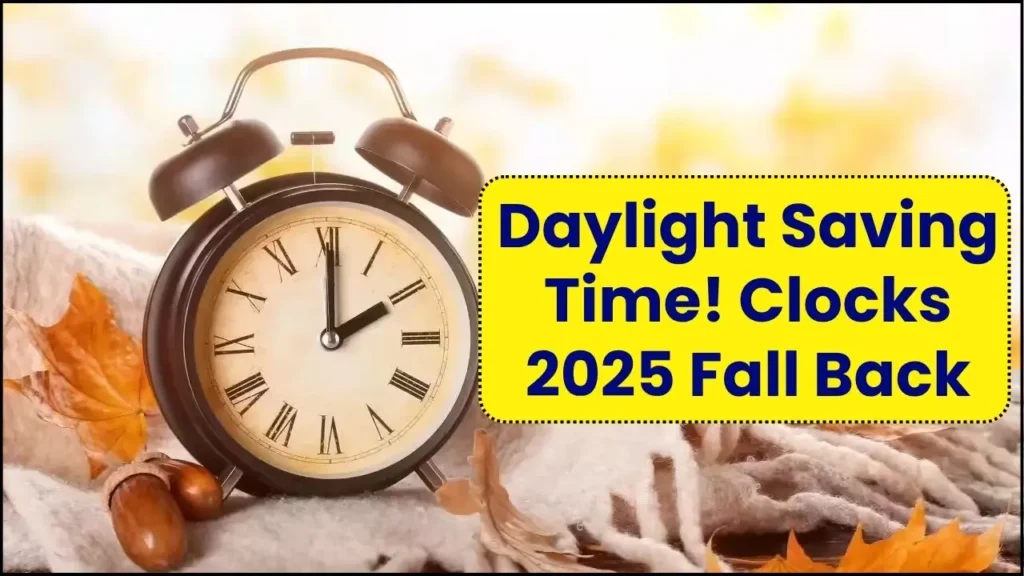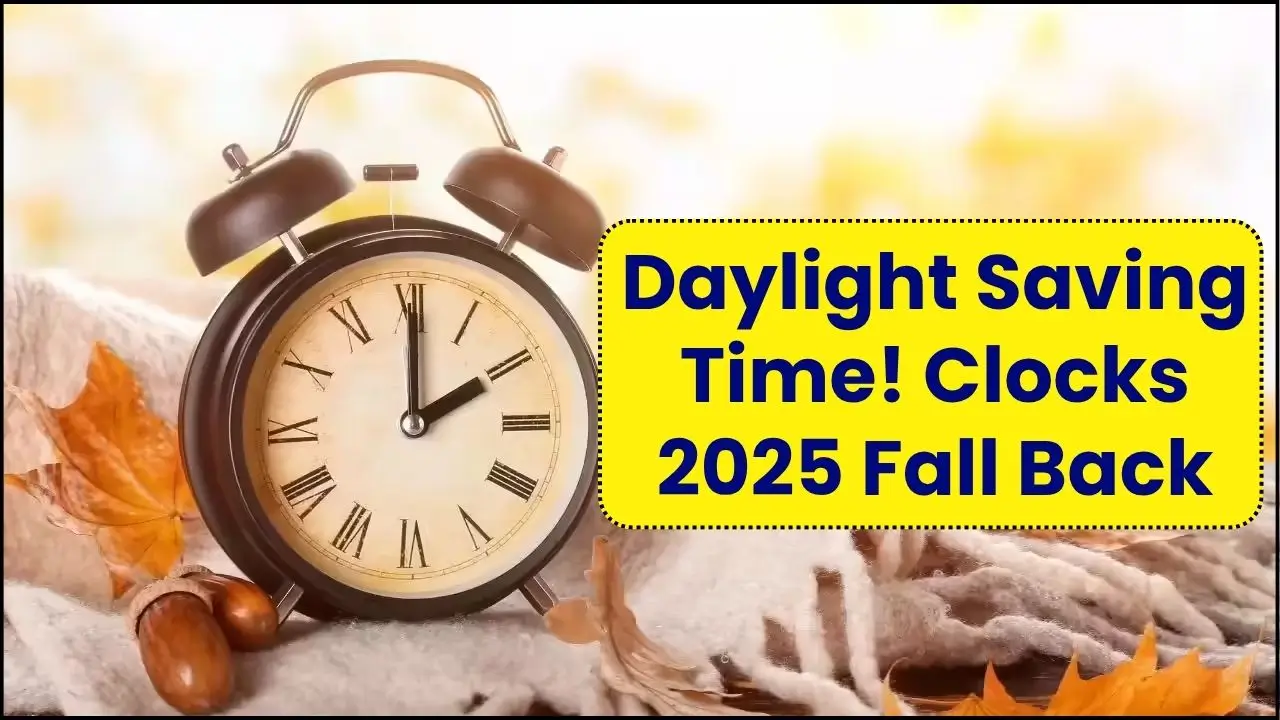Daylight Saving Time 2025: Clocks Fall Back Sooner This Year is right around the corner, and yes, the change really does arrive a touch earlier on the calendar this season. If you’ve been wondering when to change your clocks, what exactly shifts, and how to prepare without missing a beat on Monday morning, this guide breaks it all down in plain language. You’ll get a practical timeline, travel and tech tips, health pointers for smoother sleep, and clarity on why the schedule feels “sooner” even though the rules haven’t changed.

Daylight Saving Time 2025: Clocks Fall Back Sooner This Year lands on the first Sunday in November, with clocks rolling back one hour at 2 a.m. local time to 1 a.m. This earlier placement versus last year can make the switch feel more abrupt for schedules and events. Expect brighter mornings straight away, earlier sunsets, and a quick adjustment period as routines settle into standard time.
Table of Contents
Daylight Saving Time 2025
| Key Item | Details |
|---|---|
| End Date/Time (U.S.) | Sunday, November 2, 2025, at 2 a.m. local time; set clocks back to 1 a.m. |
| What Changes | Lighter mornings, earlier sunsets, darker evenings through winter |
| Who Doesn’t Change | Most of Arizona, all of Hawaii, and U.S. territories |
| Why It Feels Sooner | First Sunday in November timing falls earlier on the calendar than last year |
| UK/Europe Timing | UK clocks go back the prior Sunday under the last‑Sunday‑in‑October rule |
| Next U.S. Shift | Spring forward returns in March under the current federal schedule |
Daylight Saving Time 2025: Clocks Fall Back Sooner This Year arrives with a simple to‑do set clocks back one hour at 2 a.m. on Sunday, November 2—and a few smart habits that make Monday easier, like checking manual clocks, updating calendar reminders, and adjusting outdoor lighting. Treat the earlier sunsets as a cue to tighten evening routines, keep sleep and wake times consistent, and plan commutes and events with the brighter mornings in mind.
What Changes On November 2, 2025
The moment clocks fall back, sunrise and sunset both move about an hour earlier relative to your clock. That means morning light arrives sooner, which many find helpful for waking up, while evenings go dark earlier, affecting commutes, outdoor play, and event lighting. Broadcasts, public services, and schedules align immediately to local standard time.
Why It Feels Earlier This Year
The rule is simple: the time change always hits on the first Sunday in November. Depending on the calendar, that Sunday can fall on different dates, which is why 2025 registers as “sooner” than last year. The shift can feel more noticeable when it lands just one day shy of the earliest possible date on the calendar.
Who Must Change Clocks and Who Doesn’t
Almost all U.S. states observe the fall back. If you’re in most of Arizona or in Hawaii, you’re already on standard time all year, so no clock change is required. The same applies across U.S. territories. If you’re crossing state or territorial lines around the date, double‑check local rules before you travel.
UK And Europe Timing
The United Kingdom and much of Europe switch a week earlier than the United States, using the last‑Sunday‑in‑October schedule. That puts their return to wintertime ahead of the U.S., which is why transatlantic calls and meetings can drift by an hour during the changeover period.
Travel, Tech, And Scheduling Tips
Most phones, computers, and connected devices update automatically, but analog watches, ovens, and car dashboards often need manual adjustment. If you’re flying or taking a train near the change, confirm tickets and timetables in local time and review calendar invites if participants are in different time zones. For work on Monday, build in a small buffer so the first post‑change morning feels smooth.
Health And Routine Check‑In
Gaining an hour can feel like a small gift, but the darker evenings can push bedtimes earlier. Keep wake and sleep times steady through the weekend so your body clock adjusts cleanly. Consider an earlier outdoor walk for light exposure, dim indoor lights in the late evening, and avoid heavy meals right before bed to reduce disruptions.
What About Permanent Daylight Saving Time
There’s ongoing debate about locking the clocks year‑round. While various proposals resurface periodically, the current federal framework still governs the March‑to‑November period. For 2025, that means the fall back goes ahead as usual and spring forward returns on schedule next year unless the law changes.
Clocks Fall Back Sooner This Year
Daylight Saving Time 2025: Clocks Fall Back Sooner This Year isn’t just about an extra hour of sleep—it influences safety, energy patterns, and daily rhythms. Update recurring reminders, adjust home and exterior lighting timers, and use the weekend to test smoke and carbon monoxide alarms. Taking five minutes to prep avoids surprises when the earlier nightfall arrives.
DWP Cuts £416 a Month from Key Benefit – How to Safeguard Your Family’s Income
FAQs on Daylight Saving Time 2025
What time exactly do clocks fall back in 2025?
At 2 a.m. local time on Sunday, November 2, clocks are set back to 1 a.m., and most of the U.S. returns to standard time.
Are There Plans To End Clock Changes?
The idea resurfaces regularly in legislatures, but until a federal law changes the framework, the U.S. will continue the biannual switch. States can remain on standard time permanently but cannot adopt permanent daylight-saving time without federal approval.
Which U.S. locations don’t change their clocks?
Most of Arizona, all of Hawaii, and U.S. territories do not observe daylight saving time and stay on standard time year‑round.
Why does the UK switch a week earlier?
The UK follows the last‑Sunday‑in‑October rule, which typically places its change one week before the U.S. transition.
Will the U.S. stop changing clocks soon?
Not for 2025. While proposals to adopt permanent daylight saving time continue to be discussed, the current rules still apply for this year.
Do I Need To Manually Change My Phone’s Time?
Most smartphones, laptops, and smartwatches update automatically if “Set Automatically” or “Network Time” is enabled; double‑check manual devices like ovens, microwaves, wall clocks, and car dashboards Sunday morning.
















